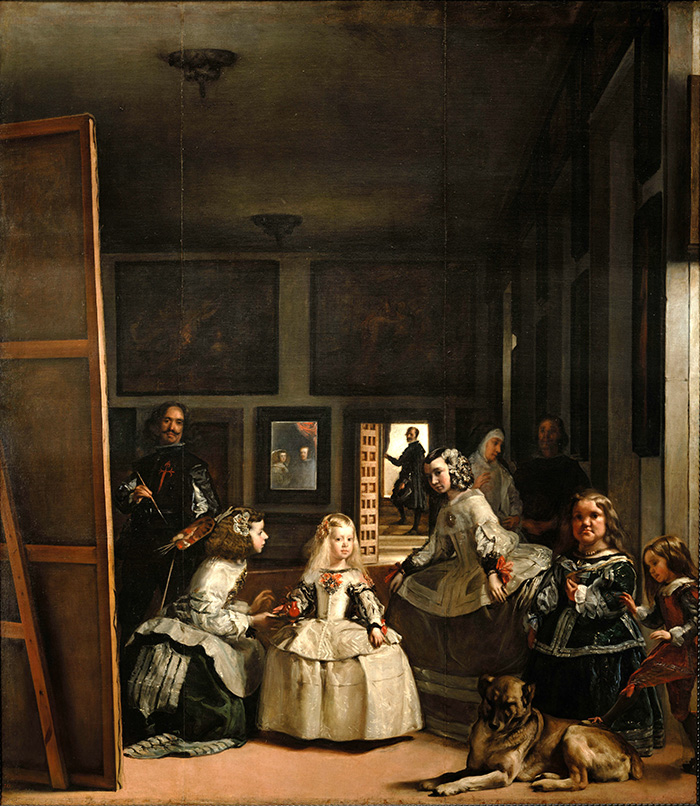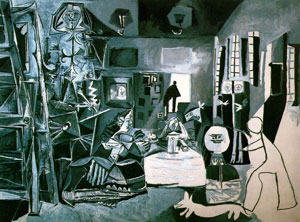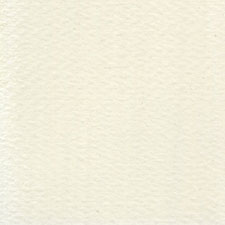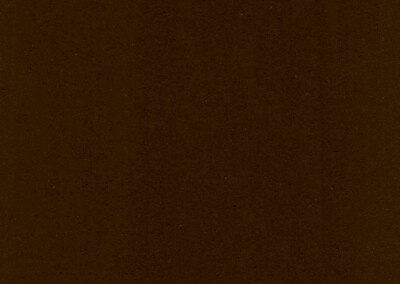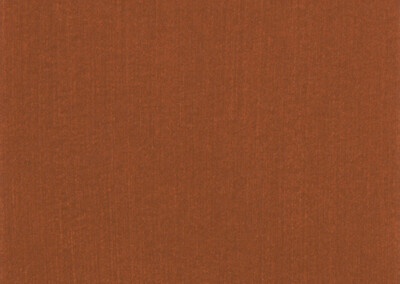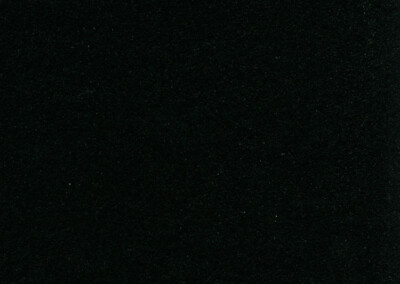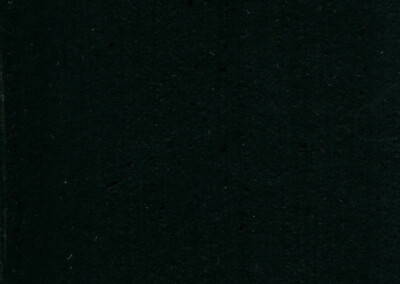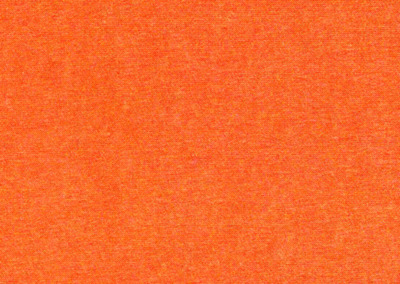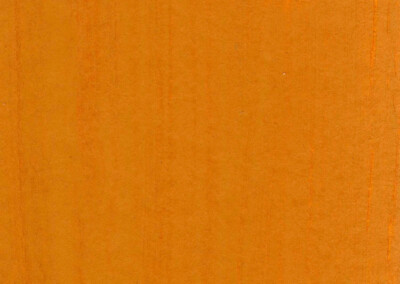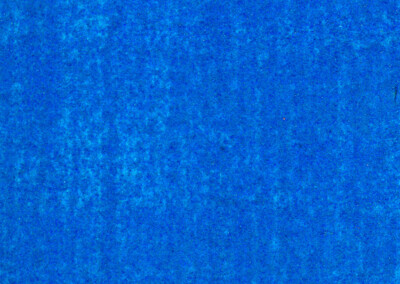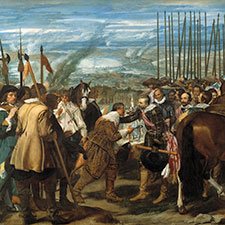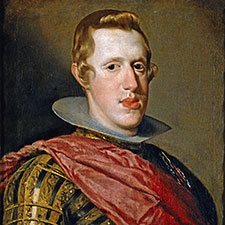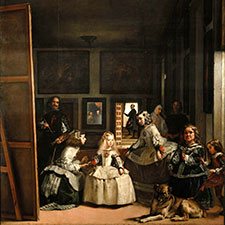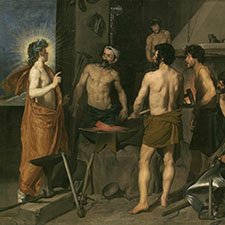Diego Velázquez, Las Meninas
1656Diego Velázquez, Las Meninas
1656Paintings sorted by Historical period | Painter | Subject matter | Pigments used
Overview
Medium: Oil
Support: Canvas
Size: 318 cm x 276 cm
Art period: Baroque
Museo del Prado
Inventory number: P01171
The Protagonists in the Painting

1 Infanta Margarita – Margarita Teresa of Spain, 2 doña Isabel de Velasco, 3 doña María Agustina Sarmiento de Sotomayor, 4 Maribarbola (Maria Barbola), 5 Nicolas Pertusato, 6 doña Marcela de Ulloa, 7 Bodyguard (Guardadamas) 8 Don José Nieto, 9 Diego Velázquez, 10 King Philip IV in the mirror, 11 Queen Mariana in the mirror.
Quote from an Exhibition Catalog
The following quote is from the catalog of the Velázquez exhibition in the Metropolitan Museum of Arts in New York in 1989 (1).
“In 1656 Velazquez also painted what the world recognizes as his masterpiece, perhaps
the masterpiece of all painting: Las Meninas, as it has been called since the last century,
or The Royal Family, as it was known in its time. This work represents the culmination of
Velazquez’s two principal characteristics: an immediate physical truth of vision and a complex
intellectuality. Here a seemingly straightforward scene, which appears to have been
happened on at a chance moment, is sustained by a complex mental underpinning, which
makes it necessary, upon more careful examination, to regard the painting as an unsolved
enigma. This renowned canvas depicts the infanta Margarita surrounded by her meninas
(the young noblewomen who attended her), servants, and dwarfs and buffoons (the stunted
Mari-Barbola and young Pertusato, harrying the enormous dozing mastiff) in the austere
setting of a palace salon. At the rear of the room a door opens onto a stairway where we see
the backlit figure of a gentleman whose name has survived along with the painting: Don
Jose Nieto. Brush in hand, Velazquez himself stands before an enormous canvas of which
only the back is visible; he seems to gaze questioningly at the spectator, as if it is the viewer
he is painting. The key is found in a mirror with a heavy ebony frame hanging on the wall in
the middle background. Reflected in its silvered surface are the blurred figures of the king
and queen.”
(1) Alfonso E. Pérez Sánchez, Julián Gállego, Velázquez, Metropolitan Museum of Art, 1989, p. 52.
Related Paintings
Pigments
Pigment Analysis
The following pigment analysis is based on the technical examination of Velázquez’s paintings in the Museo Prado in Madrid (1). The colours in this painting have darkened considerably with age. The presently dark green skirt of the kneeling menina (Nr 6) was originally of much brighter blue-green colour associated with the pigment azurite. The cleaning of the painting in 1984 has brought some of the colours back but not all of them (1 page 51-52).
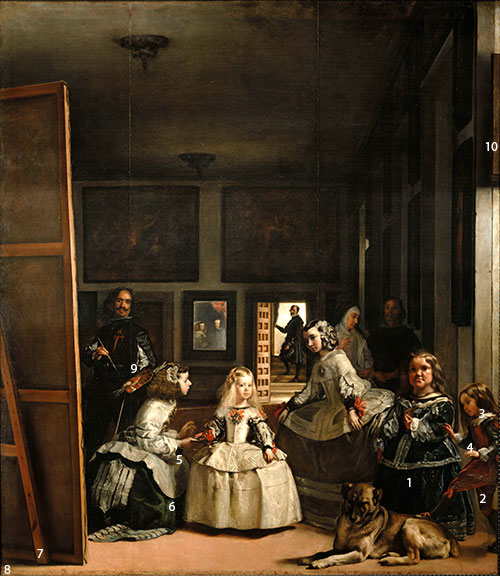
1 Blue-green dress of the dwarf on the right: azurite, lead white, natural ultramarine, and charcoal black/bone black.
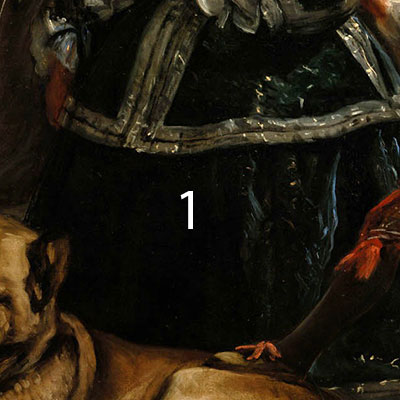
2 Red left stocking of the boy at far right: lead white, vermilion, red lake, and small amounts of calcite and charcoal black/bone black.
3 White collar of the boy at far right: lead white.
4 The flesh color of the left hand of the boy on far right: lead white with small amounts of charcoal black/bone black, calcite, smalt, red lake, vermilion, and yellow ochre.
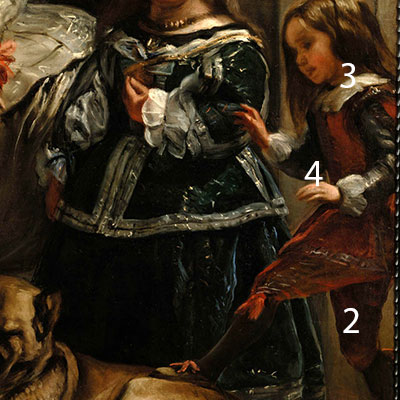
5 The black cuff of the right sleeve of the lady-in-waiting to the left of Infanta Margarita: lead white, charcoal/bone black with small amounts of calcite and azurite.
6 Green-blue dress of the lady-in-waiting to the left of Infanta Margarita: lead white, azurite, yellow ochre, charcoal/bone black with small amounts of calcite and smalt.
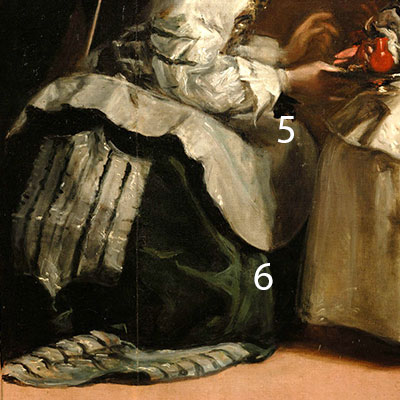
7 Light brown stretcher support of the canvas: lead white, yellow ochre, charcoal/bone black, calcite, and a small amount of smalt.
8 The light brown floor near the lower-left corner: lead white, charcoal/bone black, yellow ochre, calcite, and small amounts of red ochre.
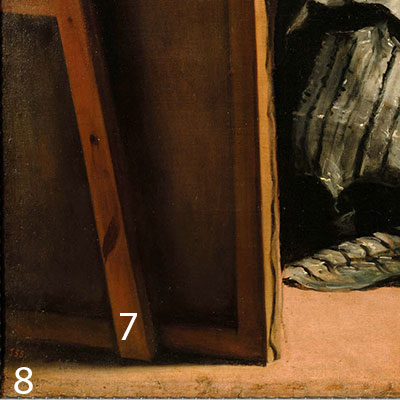
9 Velázquez’s coat consisting of several layers: 1 sizing (?), 2 beige ground layer: lead white, some ochre, and calcite, possibly some smalt, 3 black layer.
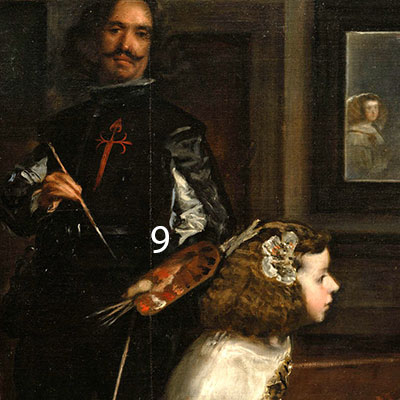
10 Background in the right edge consisting of several layers (from top to bottom):
1 Brown layer: lead white, brown ochre or umber, red ochre (?).
2 Gray layer: lead white and charcoal black.
3 Pale gray layer: lead white.
4 Beige ground: lead white, brown ochre or umber
5 sizing: contains some calcite, bone black and clay or ochre.
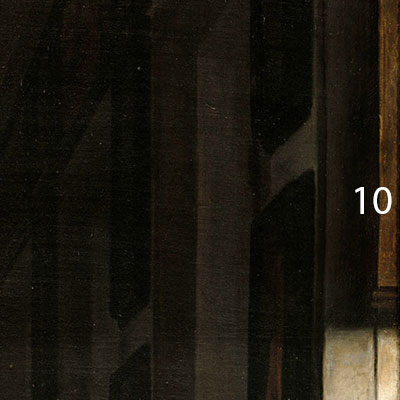
References
(1) McKim-Smith, G., Andersen-Bergdoll, G., Newman, R. Examining Velazquez, Yale University Press, 1988, pp 121 – 122.
(2) P.C. Gutiérrez-Neiraa, F. Agulló-Ruedab, A. Climent-Fonta, C. Garrido, Raman spectroscopy analysis of pigments on Diego Velázquez paintings. Vibrational Spectroscopy, 69, 2013, 13 – 20.
(3) Alfonso E. Pérez Sánchez, Julián Gállego, Velázquez, Metropolitan Museum of Art, 1989, p. 52.
Pigments Used in This Painting
Resources
See the collection of online and offline resources such as books, articles, videos, and websites on Velázquez in the section ‘Resources on Painters‘
Videos
Video: 'Velázquez,Las Meninas' by James Earle and Christina Bozsik, TED-Ed
Video: 'Velázquez,Las Meninas' by Smarthistory
Video: 'Velázquez,Las Meninas' by Nerdwriter1
Publications and Websites
Publications
(1) McKim-Smith, G., Andersen-Bergdoll, G., Newman, R. Examining Velazquez, Yale University Press, 1988.
(2) Alfonso E. Pérez Sánchez, Julián Gállego, Velázquez, Metropolitan Museum of Art, 1989, pp. 110 – 115.
(3) Suzanne L. Stratton-Pruitt (Editor), Velazquez’s Las Meninas, Cambridge University Press, 2002.
(4) Javier Portús, Miguel Morán Turina and Andrea Sommer-Mathis, Velázquez: Las Meninas and the Late Royal Portraits, Thames and Hudson, 2014
(5) Michel Foucault, Velázquez, Las Meninas: Essay, Insel 1999 (German).
(6) Michel Foucault, Order of Things, An Archaeology of Human Sciences, Knopf Doubleday Publishing Group 2012. It contains the English translation of the essay on Las Meninas. Available as pdf

